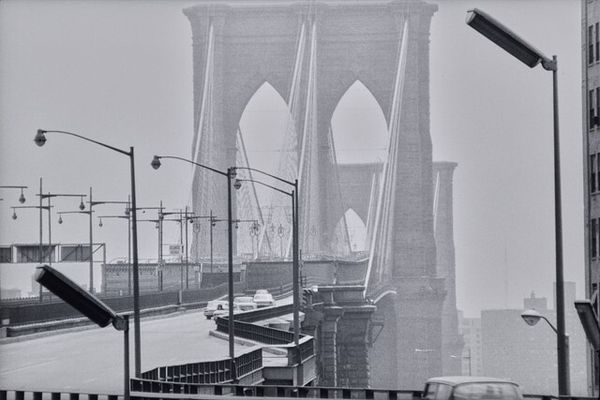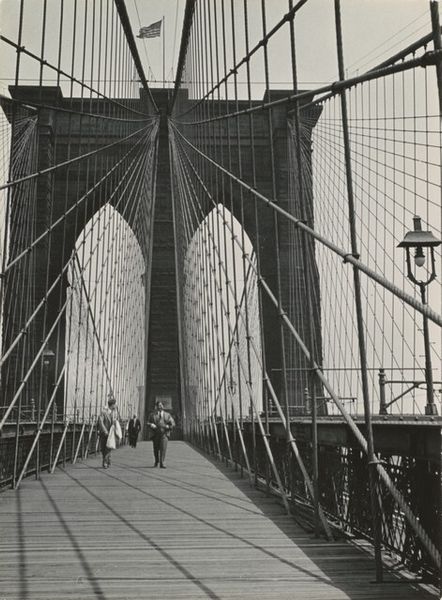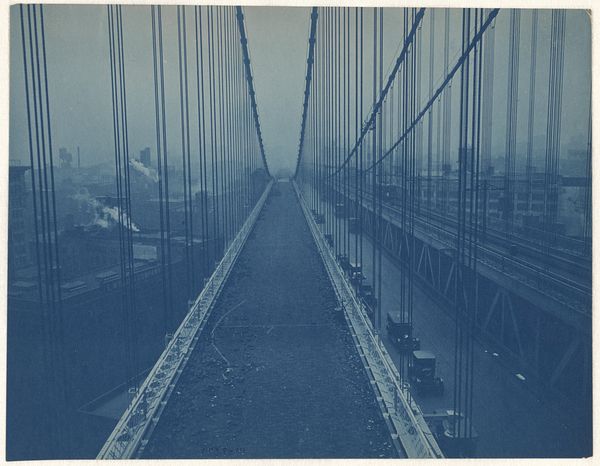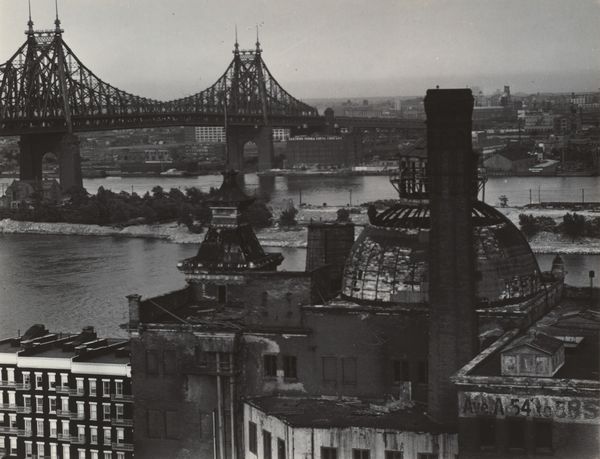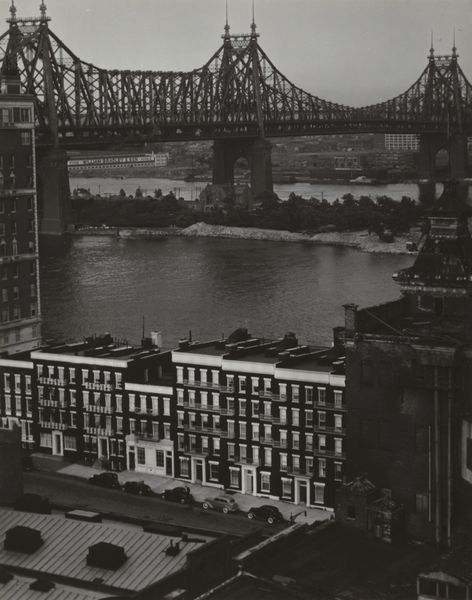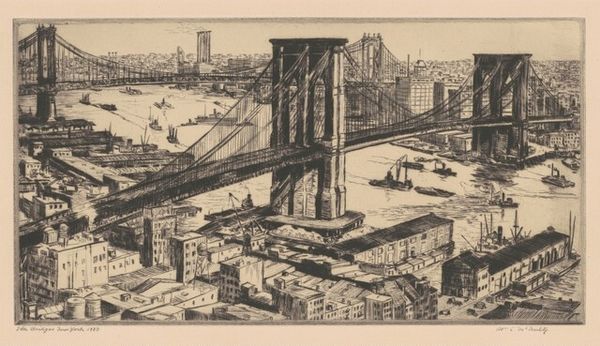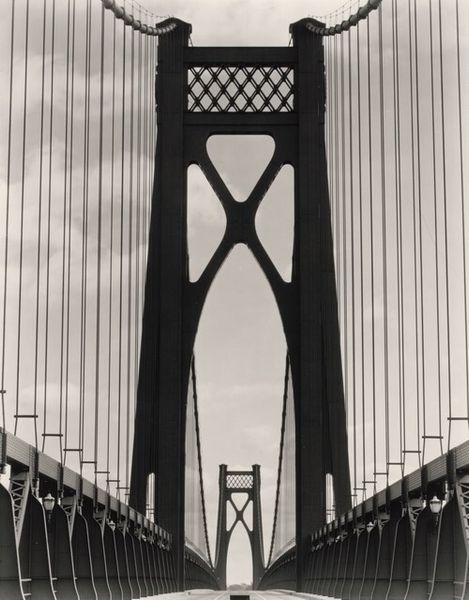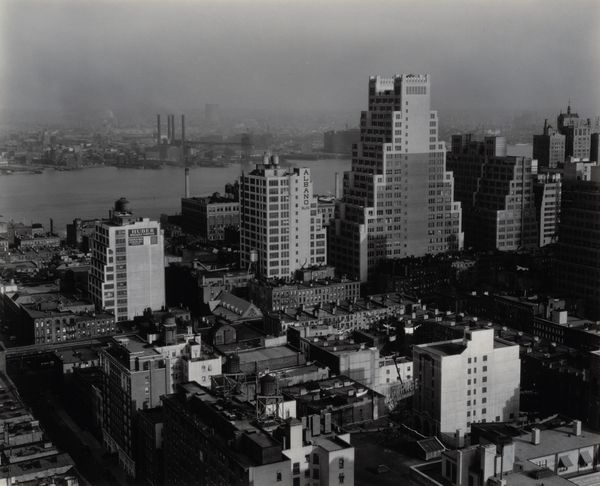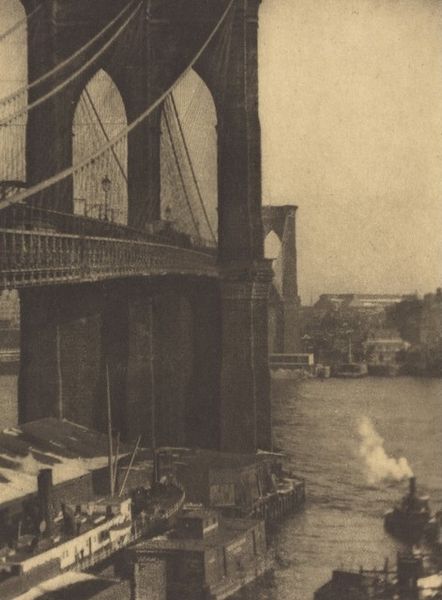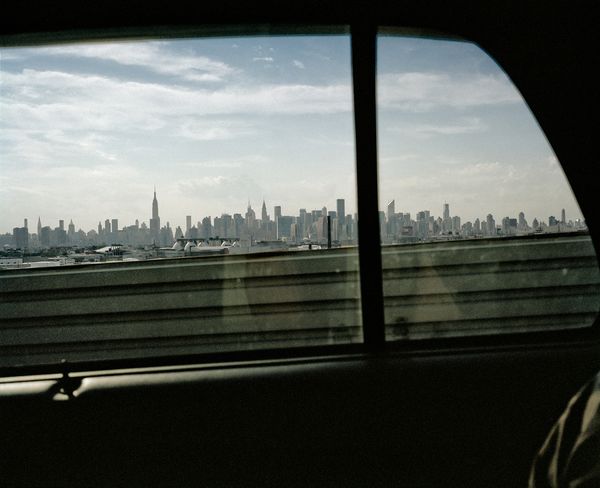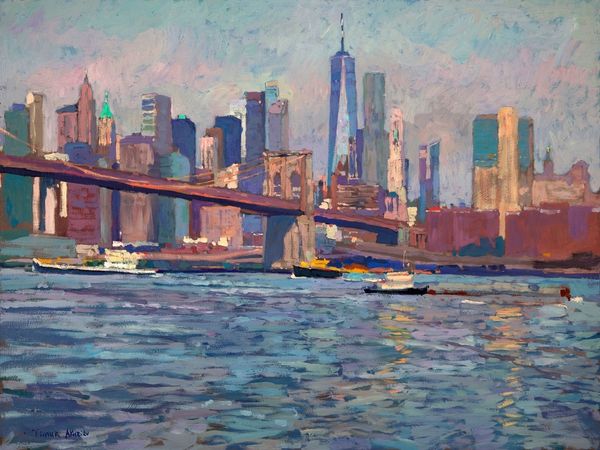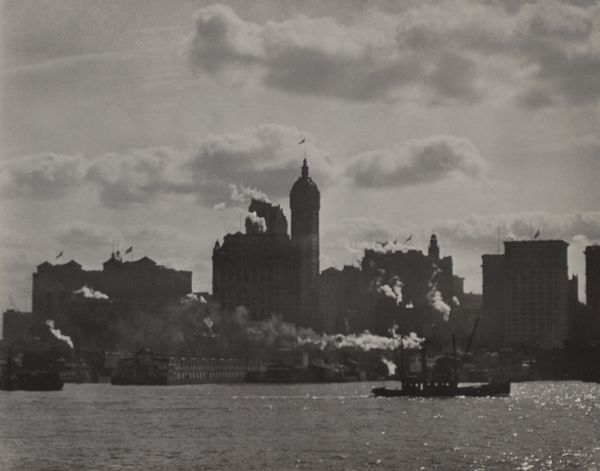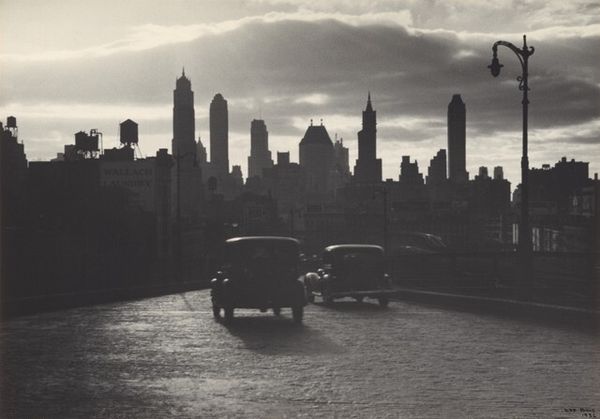
Copyright: Olafur Eliasson,Fair Use
Curator: What strikes me immediately about this photograph is the dramatic juxtaposition: the Brooklyn Bridge, an icon of industrial ingenuity, suddenly adorned with cascading waterfalls. Editor: Exactly. This is a photograph documenting Olafur Eliasson’s "The New York City Waterfalls," a large-scale public art installation from 2008. The project placed four artificial waterfalls at various points along New York's waterways. It’s interesting to examine this as a photographic work because the materials used to fabricate the temporary waterfalls are themselves so integral to the artwork. Curator: I see your point about materiality, but let’s also consider the project within the context of public space. These weren't just waterfalls; they were strategically placed interventions in the urban landscape. They invited reflection on the city's relationship with its waterways, particularly considering that so much industrial waste has historically been poured into the Hudson. Editor: It does make you think about access and the commodification of the natural world. Eliasson created something undeniably spectacular, which tourists flock to, effectively turning waterfront views into premium experiences. It becomes less about experiencing nature in a pure state, and more about consuming a carefully constructed spectacle. Curator: But doesn’t art have the right to explore spectacle? Surely it offered a shared public experience for people from diverse backgrounds and walks of life, a temporary reshaping of the visual language of New York. Think of the political implications: art placed in a way that's undeniably shared by the entire city. Editor: Perhaps. But I’d argue that’s a highly romantic view. Consider the energy expenditure, the raw materials required. To me, it invites an examination of the impact, production, and consumption—a material chain extending from conception to dismantling. Did these artificial falls really inspire broader engagement, or mostly just momentary awe? Curator: An excellent point. Ultimately, art such as "The New York City Waterfalls" isn't easily defined. The dialogue it provokes surrounding history, place-making, access, labor, and impact contributes just as much as the visual experience it creates. Editor: Well said. It leaves me contemplating the social role and responsibility of temporary monumental art in the twenty-first century, considering issues around labor and materiality in creating these spectacles.
Comments
No comments
Be the first to comment and join the conversation on the ultimate creative platform.
